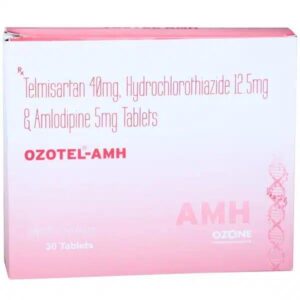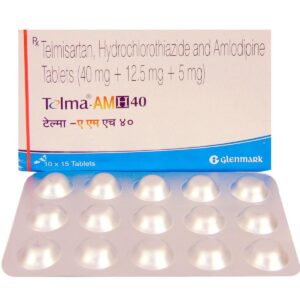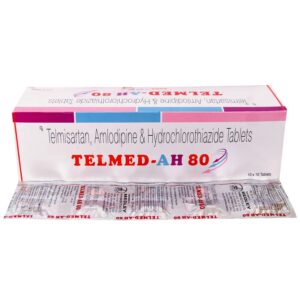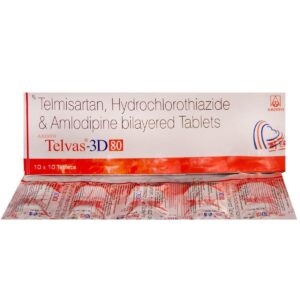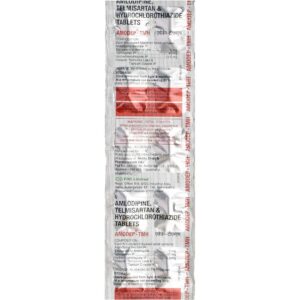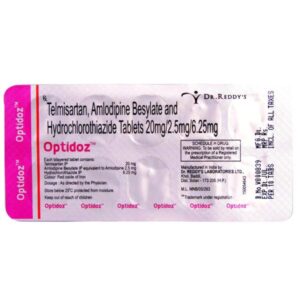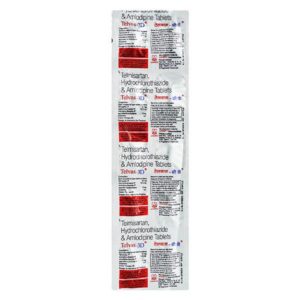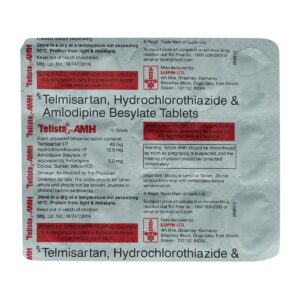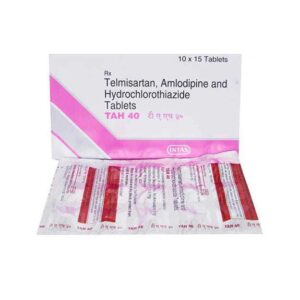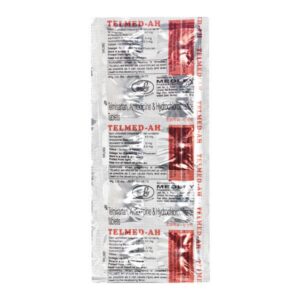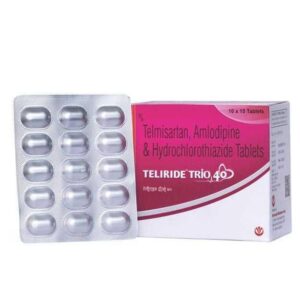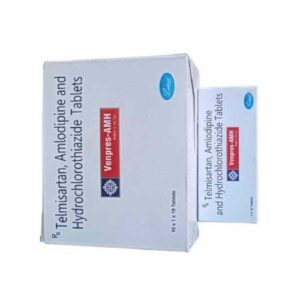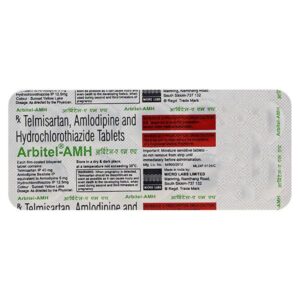HYDROCHLOROTHIAZIDE + AMLODIPINE + TELMISARTAN
Hydrochlorothiazide: Hydrochlorothiazide is a medication belonging to the class of thiazide diuretics. It is commonly used to treat high blood pressure (hypertension) and is sometimes prescribed to manage edema (fluid retention) caused by various conditions such as congestive heart failure, kidney disorders, or liver cirrhosis.
The main mechanism of action of hydrochlorothiazide is to increase the excretion of sodium and water from the kidneys, which leads to a reduction in blood volume. By reducing blood volume, hydrochlorothiazide helps to lower blood pressure and reduce fluid accumulation in the body.
The typical starting dose of hydrochlorothiazide for adults is 12.5 to 25 mg once daily. The dosage may be adjusted by the healthcare provider based on individual response and needs. It is usually taken orally, with or without food. It is important to follow the instructions provided by the prescribing doctor or pharmacist regarding the dose and duration of treatment.
As with any medication, hydrochlorothiazide may cause side effects. Common side effects include dizziness, headache, fatigue, muscle cramps, increased urination, thirst, and electrolyte imbalances such as low levels of potassium or sodium in the blood. In rare cases, it may cause more severe side effects like allergic reactions, rash, severe dizziness, or difficulty breathing. If any unusual or severe side effects occur, it is essential to seek medical attention promptly.
Hydrochlorothiazide may interact with other medications, such as nonsteroidal anti-inflammatory drugs (NSAIDs), certain diabetes medications, and lithium. It is important to inform the healthcare provider about all medications, supplements, and medical conditions before starting hydrochlorothiazide to avoid any potential drug interactions or complications.
Overall, hydrochlorothiazide is an effective and commonly prescribed medication for managing high blood pressure and edema. However, it is crucial to use it under the guidance of a healthcare professional and be aware of its potential side effects and drug interactions.
Amlodipine: Amlodipine is a medication used to treat high blood pressure (hypertension) and certain types of chest pain (angina). It belongs to a class of drugs called calcium channel blockers.
The main mechanism of action of amlodipine is to relax and widen the blood vessels, allowing for easier blood flow. By blocking the entry of calcium into the smooth muscles lining the blood vessels, amlodipine prevents the muscles from contracting and constricting the blood vessels. This helps to lower blood pressure and reduce the workload on the heart, easing symptoms of hypertension and angina.
The typical dose of amlodipine for treating hypertension in adults ranges from 5 to 10 mg once per day. For the management of chronic stable or vasospastic angina, the usual dose is 5 to 10 mg once per day. Your doctor may adjust the dose based on your individual needs and response to the medication.
Common side effects of amlodipine may include dizziness, flushing, headache, swelling of the ankles or feet, and stomach pain. Some individuals may also experience fatigue, nausea, palpitations, or a rapid heartbeat. In rare cases, amlodipine can cause more serious side effects such as severe allergic reactions, liver problems, or low blood pressure.
It’s important to let your healthcare provider know about any other medications you are taking, as some drugs can interact with amlodipine and alter its effectiveness or increase the risk of side effects. It’s also essential to inform your doctor about any existing medical conditions or allergies before starting treatment with amlodipine. Ultimately, it is crucial to follow your doctor’s instructions and attend regular check-ups while taking amlodipine to ensure its safe and effective use.
Telmisartan: Telmisartan is a medication that belongs to a class of drugs called angiotensin II receptor blockers (ARBs). It is used primarily to treat high blood pressure (hypertension), but it may also be prescribed for other conditions such as reducing the risk of heart attack, stroke, or cardiovascular death in patients with a high risk of cardiovascular events.
The mechanism of action of Telmisartan involves blocking the action of angiotensin II, a hormone that causes blood vessels to constrict, thereby increasing blood pressure. By blocking angiotensin II from binding to its receptors, Telmisartan helps relax and widen the blood vessels, facilitating the flow of blood and lowering blood pressure.
The typical starting dose of Telmisartan for hypertension is usually 40 mg once daily. However, the dose can be increased up to a maximum of 80 mg per day depending on the individual patient’s response. The medication can be taken with or without food and should be taken at the same time every day.
As with any medication, Telmisartan can cause side effects. The most common side effects include dizziness, headache, stomach pain, back pain, diarrhea, and cold-like symptoms. More serious side effects are rare but may include an allergic reaction, swelling of the face, lips, or tongue, difficulty breathing, or signs of kidney problems such as changes in urine output or blood in the urine. It is important to consult a healthcare professional if any severe or persistent side effects occur.
Telmisartan is generally considered safe and effective when used as prescribed by a healthcare provider. It is important to note that the drug may interact with other medications or medical conditions, so it is essential to inform the prescribing healthcare provider about any other medications or medical conditions before starting Telmisartan.

